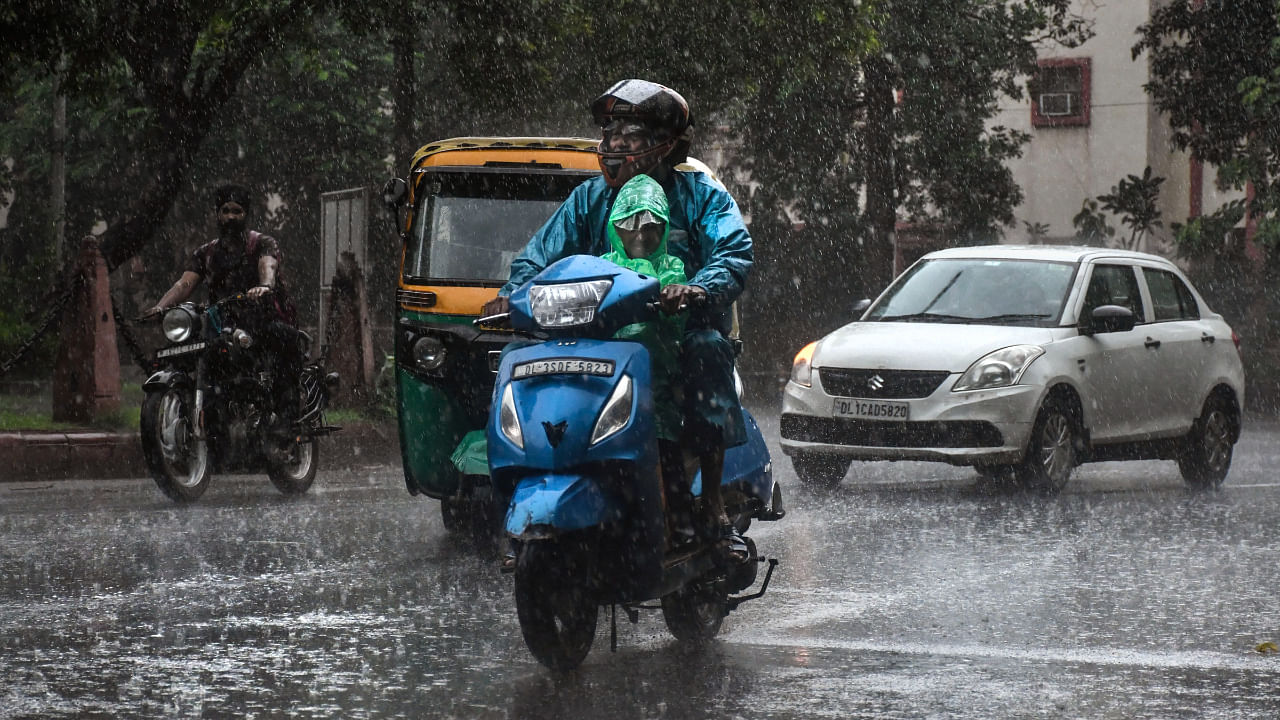
Rain lashed Delhi on Wednesday, inundating low-lying areas and affecting traffic movement in parts of the city.
People shared pictures and videos of rainwater gushing into residential areas and vehicles wading through waterlogged roads.
The traffic police issued an advisory, asking people to check the weather before heading out.
"As per IMD (India Meteorological Department) report, thundershower with moderate intensity to heavy intensity rain with gusty winds would occur over Delhi and adjoining areas. Commuters are advised to plan their journey accordingly," it tweeted.
Generally cloudy sky, moderate rain or thundershowers are predicted in the city over the next three days.
The national capital recorded a minimum temperature of 28.2 degrees Celsius, a notch above normal. The maximum temperature is likely to settle around 33 degrees Celsius.
The IMD has predicted "enhanced rainfall activity" over northwest India for two-three days.
The monsoon had covered the entire country on July 2, six days ahead of schedule. However, rains in Haryana, Punjab, Delhi, Uttar Pradesh, Bihar, Jharkhand and West Bengal have remained subdued.
Meteorologists attribute the rain deficit in the north and northwest India to the formation of back-to-back low-pressure areas in the Bay of Bengal in July which kept the monsoon trough over central India for an unusually long period.
The Safdarjung Observatory, Delhi's primary weather station, has recorded 189.6 mm of rainfall against a normal of 201 mm since the start of the monsoon season on June 1.
After a relatively dry June, the capital has logged 165.1 mm of precipitation against a normal of 126.9 in July so far. But most of the rains in July came on the first day (117.2 mm).
The Safdarjung Observatory recorded 30 mm of rainfall between 8:30 am on Saturday and 8:30 am on Sunday. However, other weather stations have recorded light to moderate rainfall on several occasions this month.
The IMD uses four colour codes for weather warnings: green (no action needed), yellow (watch and stay updated), orange (be prepared) and red (take action).